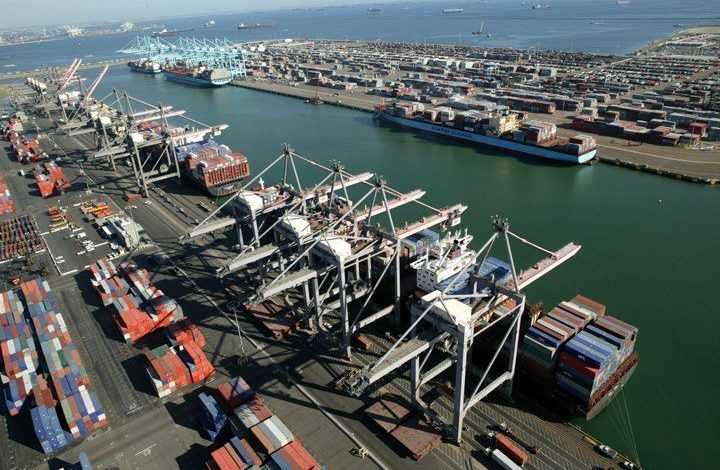Cargoes rolled on busy transpacific

The peak season on the transpacific has hit top gear with reports of cargoes being rolled. The news follows on from reports carried on Splash earlier this week that Maersk has added a couple of extra loaders to make the most of the uptick with other carriers expected to add more capacity in the coming weeks.
Andy Lane from CTI Consultancy said that some of the backlog might have been a result of poor weather in China recently, likely resulting in some port closures, slower productivity on the terminals, and some vessels sailing before being fully utilised. The rolling of boxes, he said, was not simply down to the fact that there is too much cargo this peak season although there has been a surge of exports trying to beat upcoming increasing import tariffs.
Lane also noted that a lot of capacity – three strings, one from each alliance – was pulled in May and June.
In an article carried on Splash last week Klaus Lysdal from rate platform iContainers warned that amid the reduced capacity and expected record volumes, shippers’ should expect a worse space shortage situation and higher costs.
“Even shippers who have annual contracts may find themselves short as there’s no guarantee when capacity is scarce,” Lysdal warned.
Lars Jensen, a partner at SeaIntelligence Consulting in Copenhagen, argued on LinkedIn that the fact containers were being rolled was actually a healthy sign for the industry as a whole. He maintained carriers were finally trying to match capacity with baseline demand, which has the inevitable consequence that for a short period during the peak season, space will be at a premium.
“It is very difficult to predict exactly when the peak will happen or how big it will be, hence if it is stronger than expected there will be a capacity crunch for a little while until extra-loaders can be brought in,” Jensen wrote.
Concluding, the container analyst suggested: “It is early days yet, and there is a long way to go, but if one puts on the optimistic hat the current developments in the Pacific could be seen as an early glimpse of a more stable market to emerge over the coming years.”
CTI’s Lane observed that the current crunch on the transpacific had been a boon for one platform in particular. “It seems also that NYSHEX has suddenly become more popular as some shippers wish to have guaranteed space when space is tight,” Lane told Splash.

I would not read much into rolling of the cargo observed in short evaluation period. Those result from operational decisions and yield optimization decisions done within the constraints of promised transit times. Carriers don’t dump contracted customers cargo flows, as suggested. Service contract negotiations (and rates) for the period May 1, 2018 to April 30, 2019 provide certainty for those. Cargo rolls for spot customers (laggards who hoped fro better rates) are more common, as those don’t have precise guaranteed transit times, just as airlines don’t guarantee that passenger on a V fare will not be rolled when all Y fare customers with reservations actually show up.